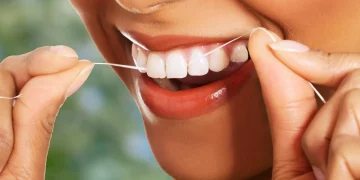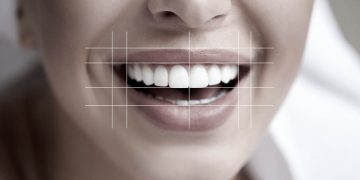Introduction
Tooth sensitivity, or dentin hypersensitivity, is a common dental problem that affects millions of people worldwide. It occurs when the protective layer of enamel on your teeth wears down, exposing the underlying dentin, which contains tiny nerve endings. As a result, certain stimuli—such as hot, cold, sweet, or acidic foods—can trigger sharp or dull pain in your teeth.
While tooth sensitivity can be temporary and mild, in some cases, it can be persistent and cause significant discomfort. In this article, we’ll explore the reasons why teeth become sensitive, the common triggers, and most importantly, how to manage and treat this problem effectively.
1. Why Do Teeth Become Sensitive?
Teeth sensitivity is a result of several factors that can wear down or damage the protective enamel, expose the tooth’s sensitive inner layers, or cause inflammation of the nerves. Here are the main reasons why your teeth might become sensitive:
1.1. Enamel Erosion
Enamel is the hard, protective outer layer of your teeth. Over time, it can erode due to various factors such as acidic foods, aggressive brushing, and certain lifestyle habits. Once enamel wears down, the underlying dentin becomes exposed, leading to heightened sensitivity.
- Causes of Enamel Erosion:
- Acidic Foods and Drinks: Citrus fruits, soda, wine, and vinegar can all contribute to enamel erosion.
- Acid Reflux Disease: Stomach acid can flow back into the mouth, wearing down enamel.
- Frequent Snacking on Sugary or Acidic Foods: Eating sugar or acidic foods frequently can cause the enamel to weaken.
1.2. Gum Recession
When the gums recede, the root surfaces of the teeth, which are not protected by enamel, become exposed. The roots contain small nerve endings that are very sensitive to stimuli. Gum recession often occurs due to gum disease, aging, or aggressive brushing techniques.
- Common Causes of Gum Recession:
- Gum Disease: Bacterial infections in the gums can cause them to pull away from the teeth.
- Aggressive Brushing: Brushing too hard or using a hard-bristled toothbrush can cause the gums to recede.
- Teeth Grinding: Grinding your teeth, especially at night, can put excessive pressure on the gums and cause recession.
1.3. Tooth Cavities or Decay
Tooth decay occurs when bacteria in your mouth produce acids that break down the enamel and form cavities. Once the enamel is compromised, the underlying dentin is exposed, leading to increased sensitivity.
- What to Look For:
- Persistent tooth pain or sensitivity, especially when consuming hot or cold foods.
- Visible holes or dark spots in the teeth.
1.4. Cracked or Chipped Teeth
A cracked or fractured tooth can expose the sensitive inner layers of the tooth, leading to pain and discomfort. The cracks can allow food particles and bacteria to reach the inner tissues of the tooth, exacerbating the sensitivity.
- Signs of Cracked Teeth:
- Pain while chewing or biting.
- Sensitivity that comes and goes, often triggered by certain foods or drinks.
1.5. Recent Dental Procedures
After a dental procedure like a filling, crown placement, or whitening treatment, your teeth might experience temporary sensitivity. This is common as the tooth heals and adjusts to the restoration.
- What to Expect: Sensitivity that typically subsides within a few days to weeks after the procedure.
- What to Do: If sensitivity persists or worsens, contact your dentist to ensure there are no complications.
1.6. Teeth Whitening
While teeth whitening products can brighten your smile, they can also cause temporary sensitivity. The bleaching agents used in whitening products can penetrate the enamel and irritate the underlying nerves, leading to discomfort.
- What to Expect: Increased sensitivity to hot or cold temperatures after whitening.
- Tip: If you experience sensitivity from whitening, try using a desensitizing toothpaste or consult your dentist for alternative whitening options.
2. Common Triggers of Tooth Sensitivity
Certain triggers can make tooth sensitivity worse or provoke pain. Identifying these triggers is essential for managing and alleviating the discomfort caused by sensitive teeth.
2.1. Hot or Cold Foods and Beverages
Foods and beverages that are too hot or too cold can cause sharp pain in sensitive teeth. Examples include ice cream, hot coffee, or cold drinks.
- Tip: Avoid eating or drinking extremely hot or cold items, or drink through a straw to minimize contact with sensitive areas.
2.2. Sweet or Acidic Foods
Sugary and acidic foods—such as citrus fruits, soda, vinegar, and candy—can trigger pain in sensitive teeth, especially when consumed frequently. These foods can also contribute to enamel erosion, worsening sensitivity over time.
- Tip: Limit your consumption of sugary and acidic foods. If you must eat them, rinse your mouth with water afterward.
2.3. Toothbrushing
Aggressive brushing with a hard-bristled toothbrush can wear down enamel and lead to gum recession, both of which contribute to tooth sensitivity. The friction from hard brushing can also cause microscopic cracks in the enamel.
- Tip: Use a soft-bristled toothbrush and avoid brushing too hard. Brush gently in circular motions to protect both the enamel and your gums.
2.4. Grinding or Clenching Teeth
Bruxism, the habit of grinding or clenching your teeth, especially at night, can place excessive pressure on the teeth, leading to enamel wear and gum recession. This can expose the sensitive parts of the tooth, causing discomfort.
- Tip: Wear a mouthguard if you grind your teeth, or consult your dentist for advice on managing bruxism.

3. How to Alleviate and Treat Tooth Sensitivity
Tooth sensitivity can be uncomfortable, but there are various ways to alleviate the pain and manage the condition. Here are some effective treatments and remedies:
3.1. Use Desensitizing Toothpaste
Desensitizing toothpaste contains compounds that help block the nerve pathways in the dentin, reducing sensitivity. These toothpastes typically need to be used for several weeks before significant relief is noticed.
- How to Use: Brush with desensitizing toothpaste twice a day. Use a soft-bristled toothbrush to avoid further irritation.
3.2. Fluoride Treatments
Fluoride can help strengthen enamel and reduce tooth sensitivity by promoting remineralization of the tooth’s surface. Your dentist can apply a concentrated fluoride treatment to sensitive areas during your routine visits.
- How to Use: Consider fluoride treatments at your dentist’s office. You can also use fluoride mouthwashes or toothpaste at home.
3.3. Avoid Triggers
As mentioned earlier, certain foods and drinks can trigger tooth sensitivity. By avoiding these triggers, you can prevent discomfort and give your teeth a chance to heal.
- What to Avoid:
- Hot, cold, or acidic foods and beverages.
- Overly sugary or sticky foods that can promote plaque buildup.
3.4. Protect Your Teeth from Grinding
If teeth grinding is causing your tooth sensitivity, a custom-fitted night guard can help protect your teeth while you sleep. This guard will reduce the pressure on your teeth and prevent further enamel damage.
- What to Do: Talk to your dentist about a mouthguard or splint to protect your teeth during sleep.
3.5. Professional Dental Care
If your sensitivity is severe or persistent, your dentist may recommend professional treatments such as:
- Sealants: Dentists can apply a protective sealant to the exposed roots or areas of the teeth that are sensitive.
- Root Canals: In extreme cases where the sensitivity is caused by nerve damage, a root canal may be required to remove the affected nerve and treat the underlying issue.
3.6. Avoid Aggressive Brushing
Switching to a soft-bristled toothbrush and adopting a gentle brushing technique can go a long way in protecting your teeth from further sensitivity. Brush your teeth using gentle circular motions rather than harsh back-and-forth strokes.
- Tip: Brush for at least two minutes, twice a day, and be sure to floss daily to remove plaque buildup around sensitive areas.
4. When to See a Dentist
If your tooth sensitivity persists or worsens despite home remedies and changes in your oral hygiene habits, it’s essential to consult your dentist. Persistent sensitivity could indicate an underlying dental problem, such as tooth decay, a crack in the tooth, or gum disease.
Additionally, if the pain becomes severe, or if you notice that your teeth are becoming loose or discolored, seek professional dental care promptly.
Conclusion
Tooth sensitivity is a common dental issue that can result from various causes, including enamel erosion, gum recession, cavities, and tooth grinding. While it can be uncomfortable, there are numerous ways to alleviate and treat tooth sensitivity, such as using desensitizing toothpaste, fluoride treatments, and avoiding triggers. With proper care, you can manage sensitivity and protect your teeth from further damage.
If your tooth sensitivity persists or causes significant discomfort, don’t hesitate to visit your dentist for an evaluation and personalized treatment plan. By addressing the root cause of your sensitivity, you can enjoy a pain-free and healthy smile.













































Discussion about this post